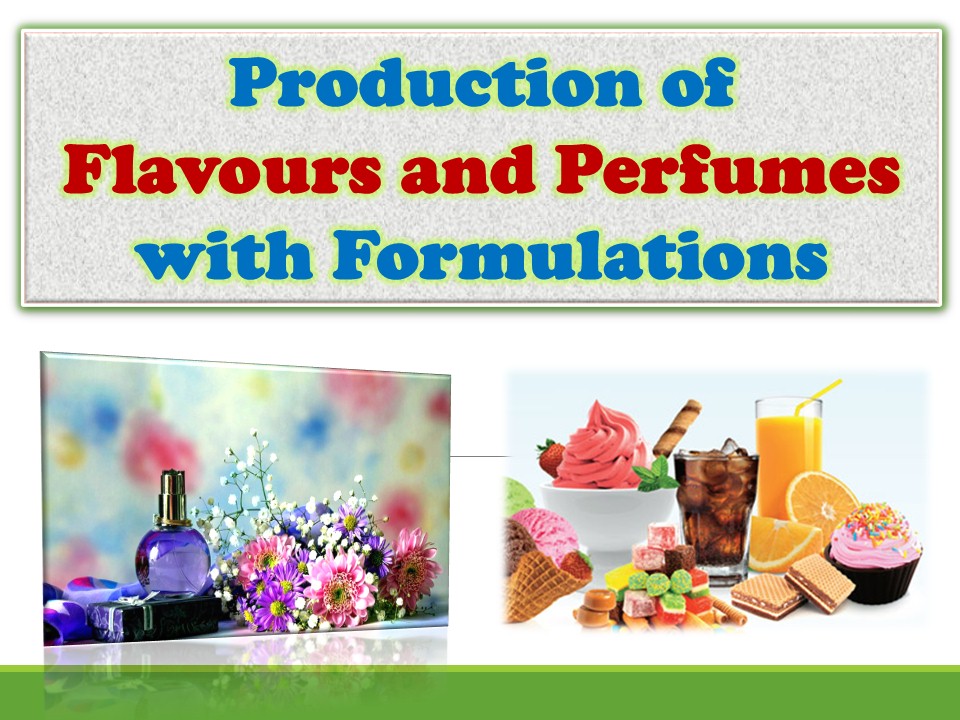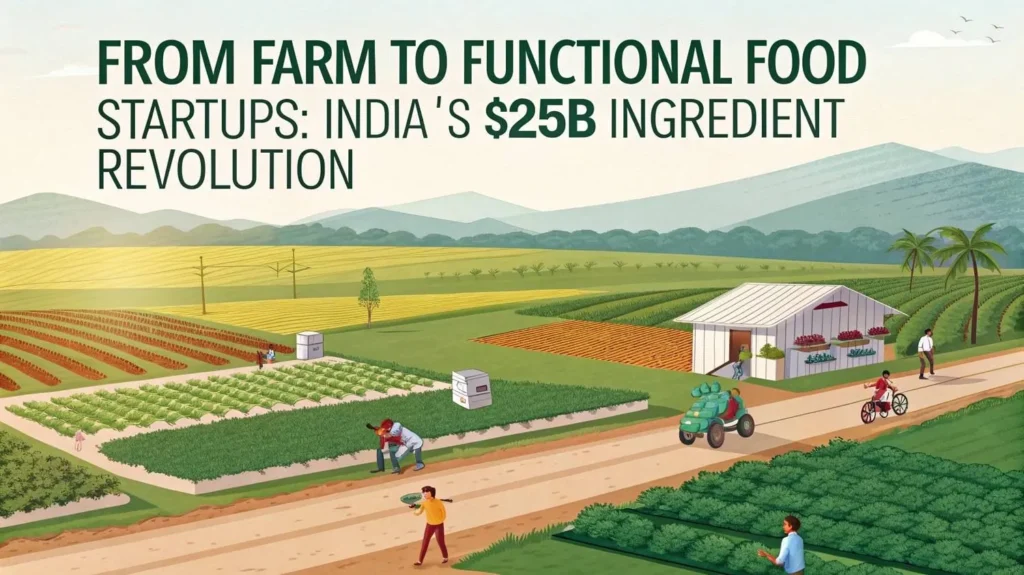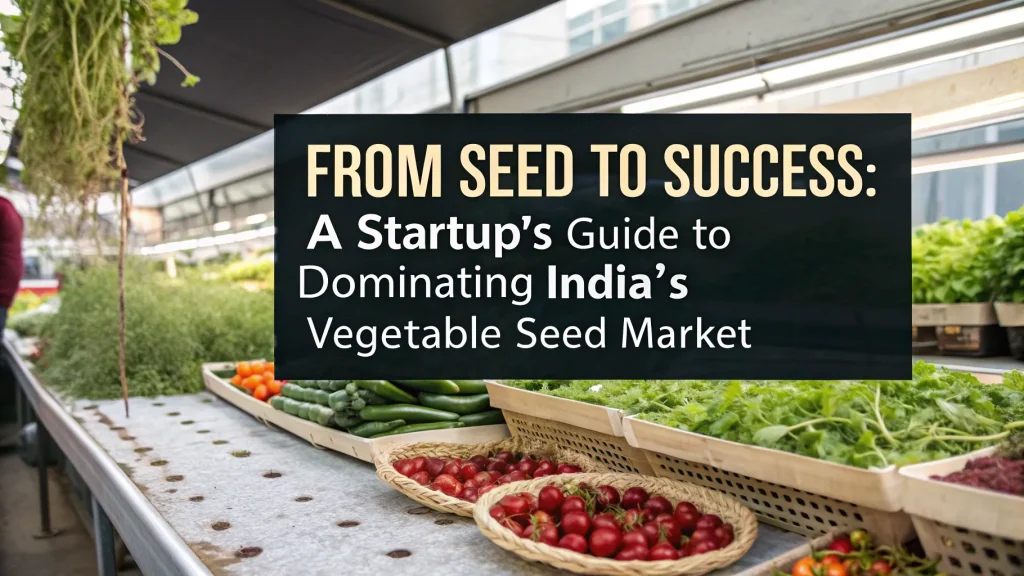
The global sensory market is booming, with taste and fragrance playing a pivotal role across industries—from food and beverages to cosmetics and personal care. The production of flavours and perfumes with formulations is not just a science but also an art, involving advanced chemical techniques, strict quality control, and deep market understanding. Entrepreneurs, chemists, and product developers who explore this field can find lucrative opportunities due to rising demand for natural, unique, and long-lasting aromatic and flavor profiles. Moreover, with technological advancements, it has become easier to produce customized formulations for diverse applications.
Complete Guide to Production of Flavours and Perfumes with Formulations
Creating effective and market-ready flavour and fragrance products involves a well-structured process. It spans from raw material selection and compound extraction to formulation, testing, and final packaging. In addition, companies must comply with safety, regulatory, and sensory evaluation standards to ensure product success.
See Also – Banana Leaf Plate Making
Understanding the Basics of Flavours and Perfumes
Flavours are compounds that enhance the taste of food and beverages. They may be natural, nature-identical, or synthetic. On the other hand, perfumes are aromatic mixtures used to scent personal care products, air, fabrics, and cosmetics.
In the production of flavours and perfumes with formulations, manufacturers use natural extracts, essential oils, synthetic aromatics, and carriers like alcohol, propylene glycol, or triethyl citrate. These ingredients are mixed to create complex profiles that appeal to consumer senses.
Notably, understanding top, middle, and base notes in fragrances or volatile and non-volatile flavour components is essential to develop balanced and lasting products.
Raw Materials and Extraction Techniques
The starting point in flavour and fragrance production is choosing the right raw materials. These include:
-
Essential oils (e.g., lavender, lemon, peppermint)
-
Absolutes (e.g., rose, jasmine)
-
Aromatic chemicals (e.g., vanillin, limonene)
-
Natural isolates from fruits, spices, flowers, and herbs
Moreover, extraction methods like steam distillation, solvent extraction, supercritical CO? extraction, and enfleurage are commonly employed. Each method impacts the purity, stability, and cost of the final ingredient.
For instance, high-end perfumes often use absolutes extracted through solvent techniques, while natural flavours rely heavily on CO? extraction for food-grade applications.
Flavour Formulation Process
The formulation of flavours involves combining multiple compounds to create a desired taste experience. This includes:
-
Base notes for body and retention
-
Modifiers to fine-tune intensity and direction
-
Blenders that help combine volatile components
-
Carriers to deliver the active ingredients
Flavourists consider solubility, volatility, stability, pH compatibility, and shelf life when formulating a product. In the production of flavours and perfumes with formulations, artificial intelligence is now being used to model taste profiles based on data sets, improving both efficiency and creativity.
Perfume Formulation and Compounding
Perfumes consist of a concentrated aromatic oil blend diluted with alcohol or oil. A typical perfume structure includes:
-
Top notes: Citrus, herbs, and light florals that are sensed immediately
-
Heart (middle) notes: Rich florals and spices that define the fragrance
-
Base notes: Woods, musks, and resins that provide longevity
Formulators test dozens of versions using “accords” or base mixtures before arriving at a final blend. Moreover, aging or “maceration” enhances the synergy between components.
For example, a modern citrus-floral perfume may include bergamot (top), jasmine (heart), and sandalwood (base), with ethyl alcohol as a carrier and antioxidants for stability.
Applications and End-Use Industries
The production of flavours and perfumes with formulations supports multiple sectors:
-
Food & Beverage: Ready-to-eat meals, bakery, dairy, beverages, and candies
-
Cosmetics & Personal Care: Soaps, creams, deodorants, shampoos
-
Household Products: Detergents, air fresheners, cleaning liquids
-
Pharmaceuticals: Syrups, oral care, and topical ointments
-
Tobacco & Oral Hygiene: Flavoring agents in chewing tobacco, toothpaste, and mouthwash
In addition, niche markets such as aromatherapy, pet care, and herbal wellness are emerging as strong consumers of flavour and fragrance formulations.
Regulatory and Safety Standards
Due to direct human consumption and skin contact, strict regulations govern this sector. Regulatory bodies include:
-
FEMA (Flavor and Extract Manufacturers Association)
-
IFRA (International Fragrance Association)
-
FSSAI (Food Safety and Standards Authority of India)
-
REACH (Registration, Evaluation, Authorisation and Restriction of Chemicals)
Each formulation must undergo toxicology, stability, and allergen testing. For example, perfume products should comply with IFRA limits on specific allergens like coumarin and linalool.
Also, flavouring agents must pass GRAS (Generally Recognized As Safe) certification in food products.
Equipment and Manufacturing Setup
Setting up a small-scale unit for the production of flavours and perfumes with formulations requires moderate investment but demands precision equipment:
-
Mixing Vessels & Agitators (SS316 grade)
-
Distillation Columns for essential oil separation
-
Homogenizers for blending
-
Filling Machines (manual or automatic)
-
Perfume Crimping Machines
-
Refrigeration Units for maceration
-
Analytical Lab Equipment (GC-MS, refractometers, pH meters)
In addition, a cleanroom or dust-free area is crucial for ensuring purity, especially in food-grade and cosmetic formulations.
Marketing and Brand Positioning
In today’s market, consumers demand transparency, sustainability, and unique experiences. Therefore, branding becomes essential.
Key strategies include:
-
Emphasizing natural or organic ingredients
-
Highlighting non-toxic, cruelty-free, and vegan credentials
-
Offering custom-blended options
-
Creating niche lines (e.g., ayurvedic scents, regional flavors)
-
Using storytelling to connect emotionally with buyers
Additionally, providing smaller sample packs, subscription kits, and scent-based personalization can boost market adoption.
Digital marketing through influencer reviews, short videos, and olfactory-based storytelling also helps brands stand out.
Export Potential and Global Market Insights
India has a rich heritage in flavour and perfume production, especially with access to exotic botanicals like vetiver, cardamom, and jasmine. As a result, Indian manufacturers enjoy a competitive edge globally.
Popular export categories include:
-
Essential oils (lemongrass, eucalyptus, sandalwood)
-
Natural flavours for snacks and beverages
-
Aromatic concentrates for incense, cosmetics, and candles
Moreover, global consumers are increasingly preferring ayurvedic, herbal, and natural formulations over synthetic blends. Exporters should ensure product documentation, MSDS (Material Safety Data Sheets), and certifications to comply with destination market standards.
Profitability and Business Potential
The production of flavours and perfumes with formulations offers high profit margins due to low raw material cost and high value addition. Even small-batch, artisanal producers can succeed by focusing on:
-
Premium ingredients
-
Creative formulations
-
Sustainable packaging
-
Strong online presence
In fact, niche fragrance brands and specialty food flavours often operate on margins between 25% and 60%. With increasing demand from food processing, beauty, and wellness sectors, this industry promises exponential growth.
Conclusion
See Also – Spice Cultivation & Processing
In conclusion, the production of flavours and perfumes with formulations combines science, sensory perception, and creativity. Whether you aim to serve the food and beverage industry or the fragrance market, this sector offers immense potential for scalable, profitable growth. Moreover, with access to quality raw materials, formulation expertise, and proper compliance, entrepreneurs can establish a competitive presence both locally and internationally. As consumer preferences shift toward personalized and eco-friendly products, this field will continue to offer rich business opportunities for forward-thinking manufacturers and innovators.




